タイピングゲーム: Japanese Kana Typing Practice
Kana is a Japanese epithet. The word “kana” means “to borrow”, and the word “nana” means “character”. It is called kana because it only borrows the sound and shape of kanji, but not its meaning, so it is called kana, and kanji is called mana.
There are two main types of kana: “hiragana” and “katakana”. Hiragana originates from the cursive script of Chinese characters and has been officially used since about the ninth century A.D. Katakana originates from the regular script of Chinese characters and has been officially used since about the tenth century A.D.
The early Japanese language did not have a writing system, and since the introduction of Chinese characters into Japan, Japanese began to be written in Chinese characters. The Japanese writing system at that time was as homogeneous as the Chinese writing system today, although it did not remain in that state. Around the ninth century A.D., kana emerged in Japan as a way to record the language and to arrange it into a fifty-name chart. There are many theories as to who created the kana. The mainstream says that the katakana was created by the Tang dynasty envoy, Jibi Makabe, by simplifying the regular script of Chinese characters, and the hiragana was created by the Tang dynasty scholar, Kukai, by simplifying the cursive script of Chinese characters. However, according to recent archaeological documents, both hiragana and katakana are actually musical notes from the Tang Dynasty, which were used by the Japanese to record their language by using the musical notes on music scores as characters.
As for the origin of kana, we have to mention the formation of Manba kana. In ancient times, although the Japanese had their own language, they did not have a way to record it, so they used oral transmission to tell the ancient events.
After the introduction of Chinese characters, the system of “Bumonji Futsu” was developed in Japan using Chinese characters. (i.e., the spoken language is the language of the people, and the written language is Chinese.) “In the ancient times, the language was simple, and it was difficult to compose sentences in Chinese. The words of those who have been described because of the training, the words do not catch the heart.” “Nowadays, we may use phonetic training in a sentence” to make up for the shortage of recording Japanese in Chinese.
Manye kana is a method of notation that treats kanji as purely phonetic symbols. For example, “和” → “よ, ヨ (yo)”, “乃” → “の, ノ (no)”, and so on. When people were writing the kana, various methods of simplification gradually emerged because the kanji used as the kana for Manba did not need to be as strict as the ideographic kanji. For example, “和” → “よ, ヨ”. After the conventional simplification, the kana gradually became the modern kana. However, until the unification of kana in modern times, there were still various systems of kana, which is the proof that the above-mentioned kana was not made by one person at one time and one place.
Japan belongs to the Kanji culture circle, and its ancient texts or ancient (or even modern) official documents are written in Kanji. However, because the classical Chinese language was extremely difficult to understand and because there were many strokes in Chinese characters, it was very difficult for the Japanese people to learn, so indirectly, only a small number of students who could endure ten years of study, or the noble class who were rich and powerful enough to hire tutors for their children, could read and write, but most of the rest of the people were illiterate in Chinese. In addition, this led to the disadvantage of “literati who were proficient in Chinese” taking control of politics. As a result, the trend of “decolonization” was born.
The result of the “de-Kanji” in Japan is the “kana” (kana), which is divided into “hiragana” (ひらがな, hiragana) and “katakana. The purpose of the two characters is different.
“Hiragana was created for the purpose of writing waka and monograms, while katakana was created for the purpose of interpreting kanji. The founder of the former was a woman, while the main writers of the latter were men.
Since the court women had been transcribing the “Manabari” for years, and the kanji in “Manabari kana” had fixed phonetic sounds, they inadvertently abbreviated the kanji and turned it into a cursive-like script, and over the years, it became “Hiragana.
On the other hand, the court children or the elites who went to university to learn Chinese had to add various auxiliary words and signs made by dismantling Chinese characters next to the Chinese characters in order to pronounce the Chinese characters into the original Japanese phonetics, and these auxiliary words and signs were called “Katakana”. For example, the Japanese pronunciation of the phrase “a hundred wisdoms are better than one sight” is “a hundred wisdoms are as good as one sight”. Interestingly, the way the elite “cheated” at that time is much the same as the way modern students “cheat” when learning a foreign language. Modern students have pencils, so they can secretly write “Goo’s Mouning” next to “Good morning” and then destroy the evidence with an eraser afterwards. Ancient Japanese students, on the other hand, did not have pencils, but they knew how to use bamboo sticks to add a subsidy mark next to the Chinese text, which is a kind of “invisible writing”, so if you don’t look closely, you can’t really see the “cheating” marks.
Therefore, in Japan after the middle of the ninth century, there were “hiragana” texts. The Takeshi Monogatari, the Collection of Ancient and Modern Japanese Songs, the Ise Monogatari, the Tosa Diary, the Dragonfly Diary, the Pillowcatcher, the Tale of Genji, etc., are all “hiragana” texts without punctuation or kanji. This was also a period when male and female scripts were at odds with each other.
In the Ise Monogatari, there are many waka, so it is only natural that the entire story is written in hiragana, as it is compiled from waka. However, “Tosa Diary” is a travelogue written by Kikanuki, a waka celebrity, who assumed the identity of a woman. However, travelogues, diaries, and essays are prose genres in which one can freely express one’s daily life and inner feelings, so writing in Chinese would be too much of an obstacle. Therefore, Kee Kanji had to record what he saw and heard during his trip in the spoken language of the time (hiragana), assuming the identity of a woman. It was because Kiganzuki wrote the first record, “Tosa Diary,” that the women of the court created the dynasty’s female literature.
If this is the case, what about the “katakana” invented by men? Did “katakana” have to resign itself to the status of “invisible script”? Of course not. However, katakana appeared in books in a more dignified manner about two hundred years after hiragana. It first appeared in “The Collected Stories of the Present and Past” and then, a hundred years later, in “The Abbot’s Tale” by Duck Nagamine.
Nowadays, “Hiragana” is used in the pronunciation of Japanese kanji and standard Japanese, while “Katakana” is mostly used in the phonetic translation of foreign languages and for special purposes (such as advertising, public signs, etc.).
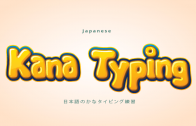
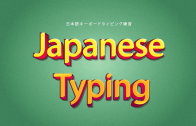
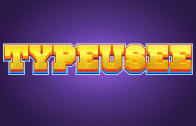
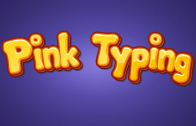
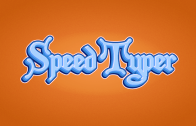

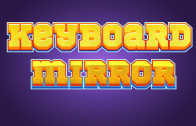
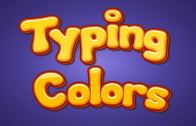








This only works when typing romaji. It would be much nicer if the option to use a kana keyboard was present. It’s the only way I type and I can’t complete this as is.
Same here 🙁